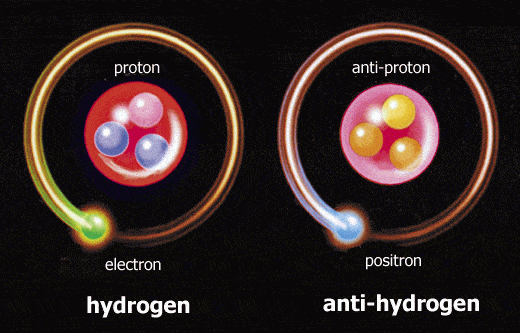team of researchers working at Harvard has measured the magnetic moment of the antiproton with unprecedented precision.
“That is a spectacular jump in precision for any fundamental quality of the antiproton measurements. That’s a leap that we don’t often see in physics, at least not in a single step,” said Prof Gerald Gabrielse of the Harvard University’s Department of Physics, co-author of the study published in Physical Review Letters.
Wait, what are they even talking about? If you know your physics, feel free to skip this part, if not, he’s the ABC on the matter.
Antimatter and magnetic moment
Particle physicists believe that initially, the Universe contained matter and antimatter equally; antimatter is material composed of antiparticles, which have the same mass as particles of ordinary matter but have opposite electrical charge and spin. Basically, an antiproton would have the same mass as a proton, but negative charge.
The magnetic moment of a particle is a quantity that determines the force that the magnet can exert on electric currents and the torque that a magnetic field will exert on it. The definition is the same for a charged particle, a molecule, a magnet, a planet – regardless of size.
Calculating the magnetic moment of an antiproton
The first hurdle is actually trapping the antimatter. The physicists were able to capture individual protons and antiprotons in a ‘trap’ created by electric and magnetic fields; once they did that, they were able to measure the magnetism of a proton more than 1,000 times more accurately than a proton had been measured before. The same thing was done for antiprotons, with an increase by a factor of 680.
“Such measurements,” Prof Gabrielse said, “could one day help scientists answer a question that seems more suited for the philosophy classroom than the physics lab – why are we here?”
Well I don’t know what to say, that sounds like a stretch to me, but it is quite possible to answer one of the questions that has been puzzling physicists: where is all the antimatter? If matter and antimatter were created equally, then how come we only see matter today? Is the antimatter… someplace else? Is it really gone?
“One of the great mysteries in physics is why our Universe is made of matter. According to our theories, the same amount of matter and antimatter was produced during the Big Bang. When matter and antimatter meet, they are annihilated. As the Universe cools down, the big mystery is: Why didn’t all the matter find the antimatter and annihilate all of both? There’s a lot of matter and no antimatter left, and we don’t know why.”
Apparently, this is one of those areas where more and more precise measurements will slowly fill in more puzzle pieces until we can paint a more accurate picture.
“Though earlier experiments, which measured the charge-to-mass ratio of protons and antiprotons, verified the predictions of CPT,” Prof Gabrielse said, “further investigation is needed because the standard model does not account for all forces, such as gravity, in the Universe. What we wanted to do with these experiments was to say, ‘Let’s take a simple system – a single proton and a single antiproton – and let’s compare their predicted relationships, and see if our predictions are correct. Ultimately, whatever we learn might give us some insight into how to explain this mystery.”
Link to original study










